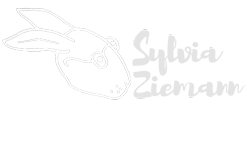An artist’s odyssey through fire, animals and odd civilizations
Art | by Gregory Beatty
Sylvia Ziemann: Accidental Utopia
Art Gallery Of Regina
Until Feb. 23
I’ve written on Sylvia Ziemann’s work a few times, starting with a 2010 show at the Dunlop’s Sherwood Village gallery, and a brochure essay for a 2011 show at Calgary’s Truck gallery. She’s also been in a group show or two that I’ve reviewed, including Anxieties at Art Gallery of Regina last winter.
In each instance, she exhibited these wonderfully intriguing installations that embodied “worst nightmare” scenarios from our current age, such as serial killers and home invasion, and apocalyptic futures of hardship, deprivation and conflict.
The installations typically have fully furnished homes and/or fortresses with functioning lights and even mini-video screens and audio recordings that “flesh out” her narratives.
Accidental Utopia, though, is strictly 2-D with ink drawings on paper, and acrylic and watercolour paintings on paper and canvas. To that extent, it represents a departure. But in theme and subject matter, there are still lots of parallels.
The drawings arose, says Ziemann, from an exercise she undertook to overcome a “crisis of creativity”. She started with a specific shape, then, through working on the drawings daily, they took on the character of a visual diary where she recorded her thoughts and feelings on stuff going on in her life.
Ziemann initially didn’t intend to show the drawings but I’m glad she reconsidered. They are a revelation. Since I know the artist, I have the luxury of reading some biographical content into them. The rabbits in the above work, for instance? Ziemann keeps a pet rabbit. She’s also interested in tarot, and some drawings resemble those divination cards.
The title of the drawing here, by the way, is “The World is on Fire”. If you break it down, there’s the obvious framing device of the skull. Other drawings have heart (real, not Valentine-shaped), torso and female reproductive organ templates. So there’s a strong sense of the body.
There’s more white space here than in other drawings, and less text too — although the title phrase is certainly prominent. For me, it evokes thoughts of the wildfires currently raging in California, and this summer’s inferno in southern Alberta and B.C. That suggests an environmental theme. And you could argue that other aspects of the drawing reinforce that.
Take the urban and rural images in the eye sockets. The latter is more picturesque than the former, but both have ominous black skies.
What to make of the cat? It possibly references the animalistic roots of some of the behaviours that cause us such grief as we struggle to transition from our old tribal habits and perceptions to being citizens of an advanced global society. At least, that’s my take on all the bullshit that’s going on these days. The cat is bandaged, though, and is labelled: Mummy. That suggests death, which fits with the environmental idea, as through our relentless exploitation of Earth’s resources we are placing tremendous stress on numerous plant and animal species. Also, ancient Egyptians revered cats to the point where they sometimes mummified them, so that’s potentially a reference to the supernatural aspect of humanity’s bond with animals.
Again, that’s just my interpretation. With their densely packed imagery and cryptic texts, the drawings invite diverse readings. Other themes that leapt out for me included personal and family health, war, crime and gun violence, feminist activism and racial discrimination.
If you’re even remotely familiar with current events, you know there’s no shortage of challenges facing us as individuals, communities, nations and a species. But there are signs of optimism in the show, too. They come mostly from the paintings, with the highlight being a large-scale rural landscape with a grain elevator in the foreground and mill in the background.
The painting, like the show, is titled Accidental Utopia. In creating the work, Ziemann says, she was inspired by Pieter Bruegel the Elder (c.1527–1569), the Dutch painter whose focus on humble peasant life broke new artistic ground — although his depiction of that hardscrabble life was usually pretty idealized.
Having covered some dark ground in her drawings, Ziemann’s painting skews toward idealism too. In it, she envisions a group of people and humanoid animals coming together after some unidentified disaster to rebuild not just their old society, but a new and improved world without all the problems that existed before (and which quite likely caused the original disaster).
It’s a nice thought. Pity we’re not there yet. Maybe one day we will be.
